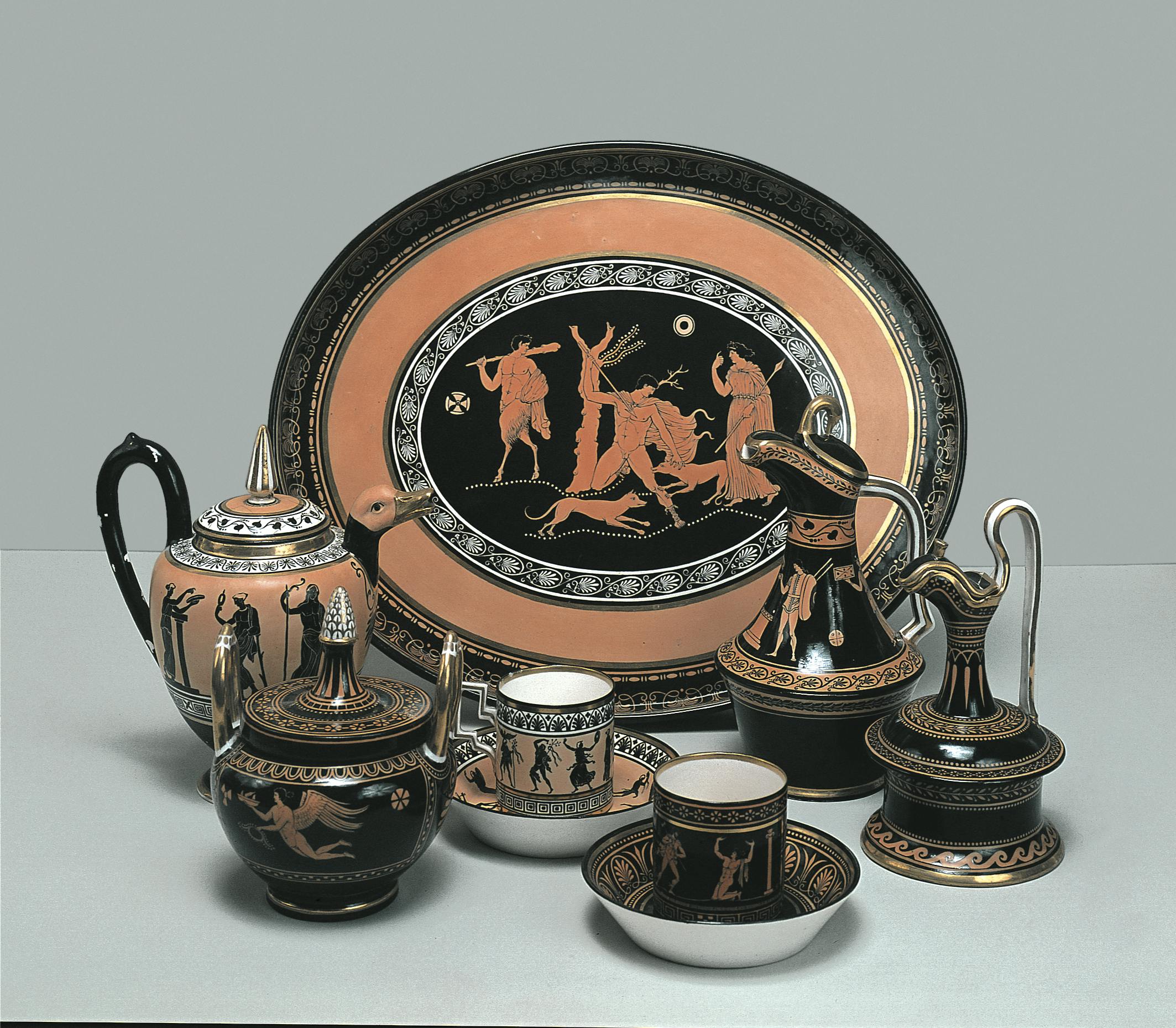Tête-a-tête with Etruscan-style decoration
Real Fabbrica Ferdinandea, Naples
The precious service covered with a red and black pigmentation, applied evenly to the surface until it almost completely cancelled the whiteness and brightness of the porcelain, is the result of an attempt to imitate the ceramics of Magna Graecia. The eclecticism that characterises its composition, anticipating the subsequent trend of assembling parts apparently not in line with each other by almost a century, was a common characteristic of the production of the manufactory around 1790.
Here, the teapot with its goose head-shaped spout is matched with a small tea cup and saucer, even though their size leads us to consider them more as a coffee cup and saucer. All three pieces are decorated with black figures on a red background. The remaining coffee pot, small cup and saucer, milk jug, and sugar bowl reveal similarities in both style and decoration (red figures on a black background), in that they evoke the shapes of ancient vases. Ancient vases also provide the inspiration for their decoration, copied almost exactly from printed repertories. The element that connects the different pieces is the tray. In the centre, it depicts the scene of Actaeon being attacked by his own dogs, instigated by the goddess Diana, who flew into a rage when he stumbled upon her while she was bathing. This scene features red figures on a black background, but it is framed by a wide red band, which recalls the decorations on the other parts of the service.
In the Real Fabbrica Ferdinandea, this type of 'Greek' decoration was called "all'Etrusca" and it mainly reproduced scenes taken from the vases in the prestigious collection of Sir William Hamilton, made known through printed repertories. However, although this collection was a valuable point of reference, a decorator could draw on a wide variety of sources at the time, considering the increase in the number of printed repertories in the second half of the eighteenth century. Therefore, the main source of inspiration for this type of decoration at the Neapolitan manufactory can clearly be found in the catalogue with antiquarian forms designed by the director Domenico Venuti for the Etruscan Service donated in 1787 by King Ferdinand IV of Bourbon to George III of England. This catalogue (Interpretation des peintures dessinés sur un Service de Table Travaillé d'aprés la bosse dans la Royale Fabrique de Porcelaine par ordre de sa Majesté le roi des Deux Siciles) contained a number of similar scenes, including the one on the tray.
From the comparison of the shapes of the Etruscan Service and those of this service, it has also become clear that the teapot was not inspired by Magna Graecia, but should rather be considered a free invention of the manufactory, which was also used around 1790 in services decorated with regional costumes.
The date of execution of our Tête-a-tête suggests that it was a gift from the King of Naples to his daughter Luisa Maria Amalia who married Ferdinand III Habsburg-Lorraine and became Grand Duchess of Tuscany in 1791.
